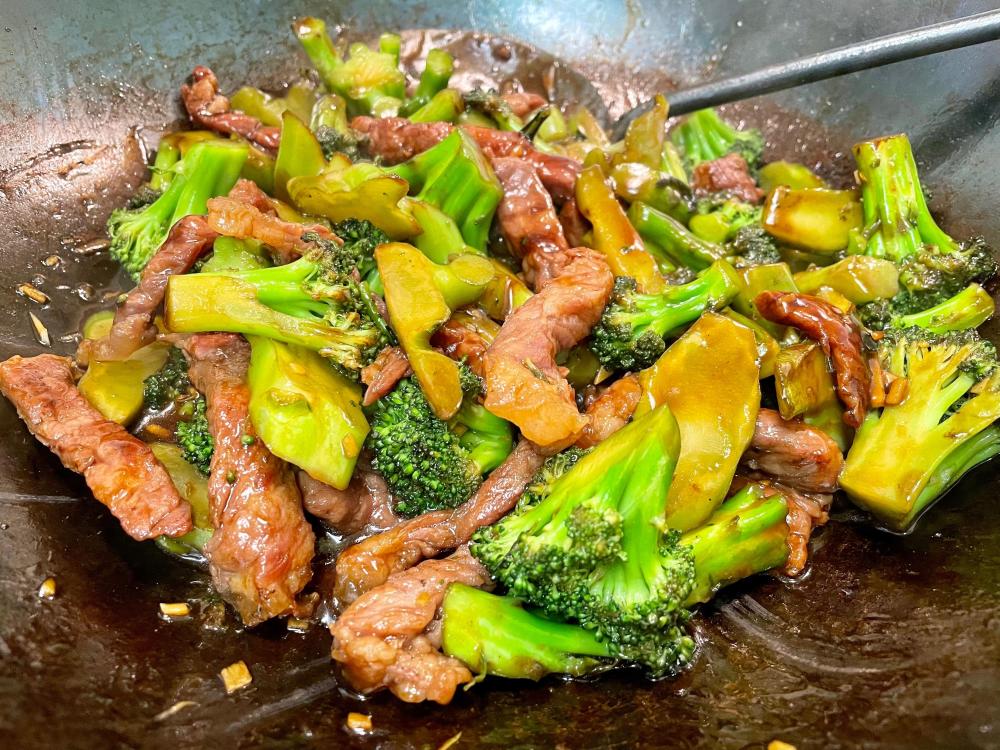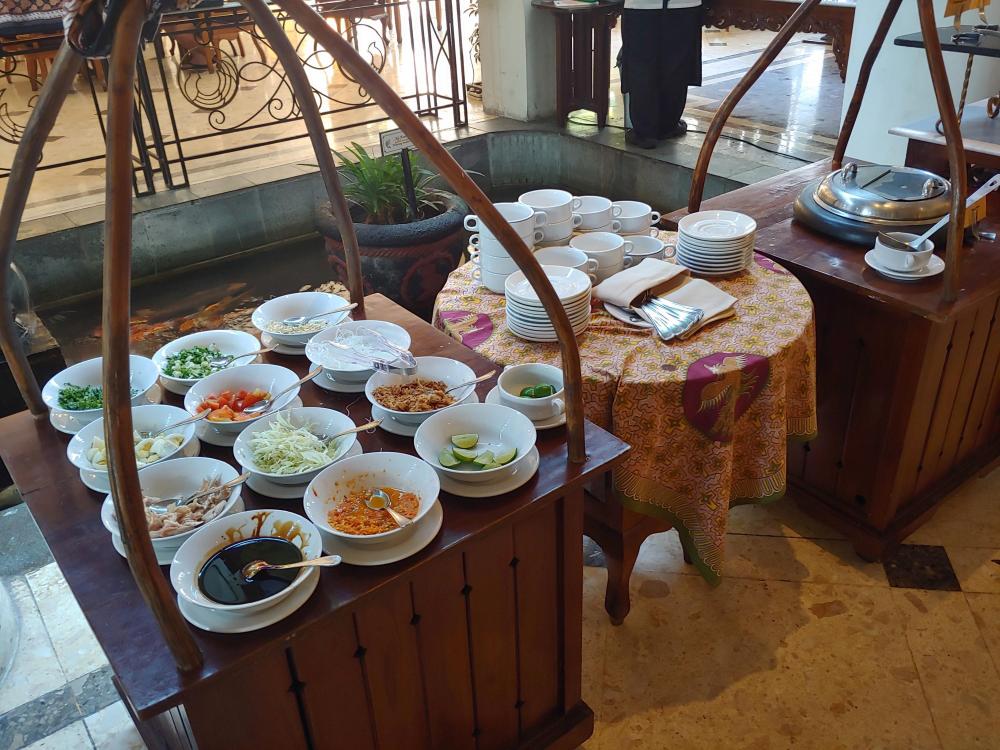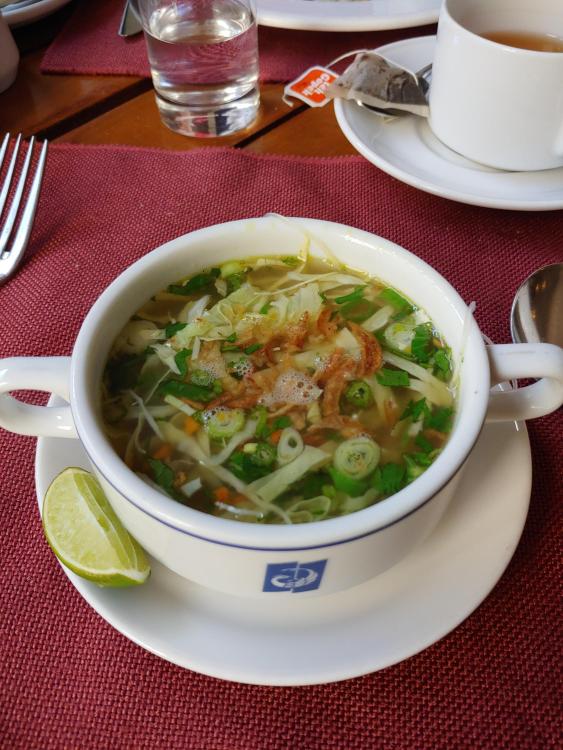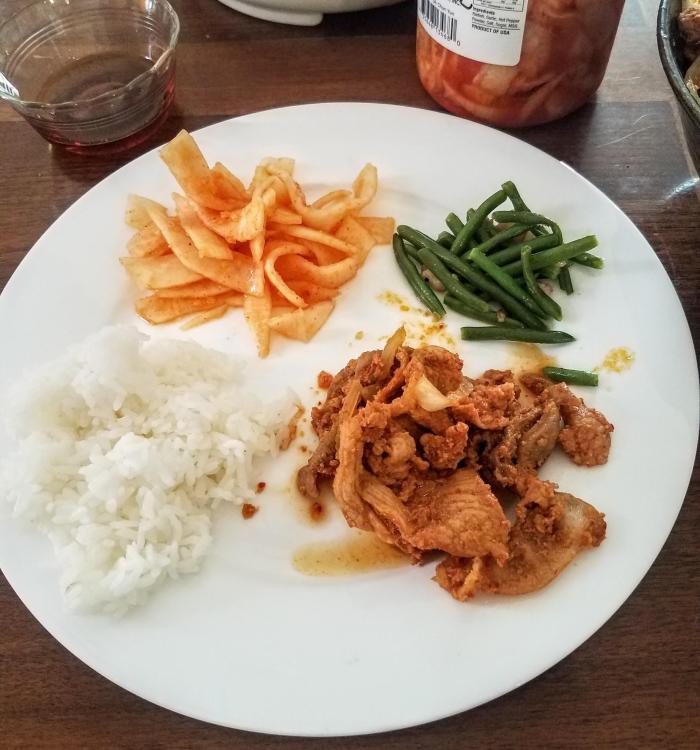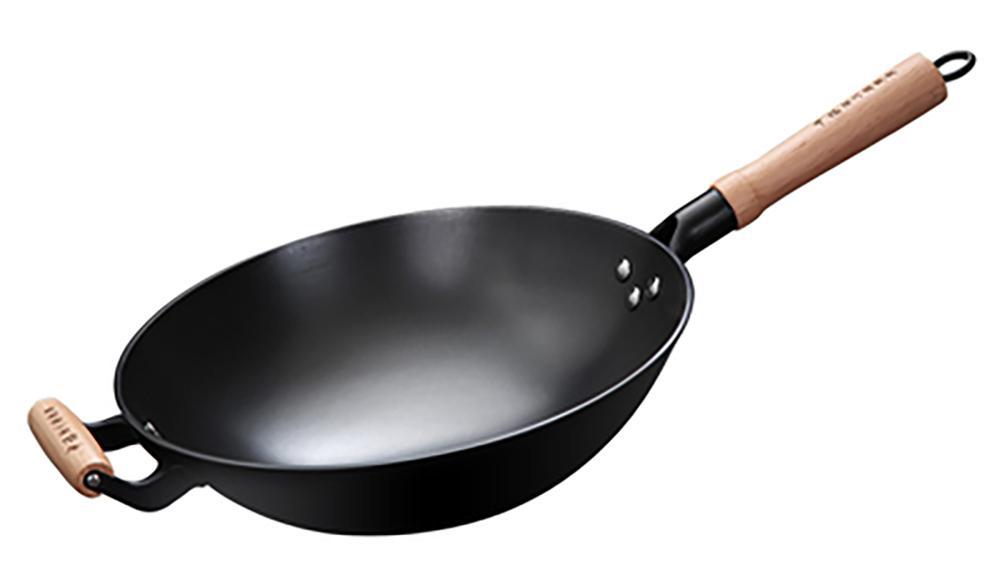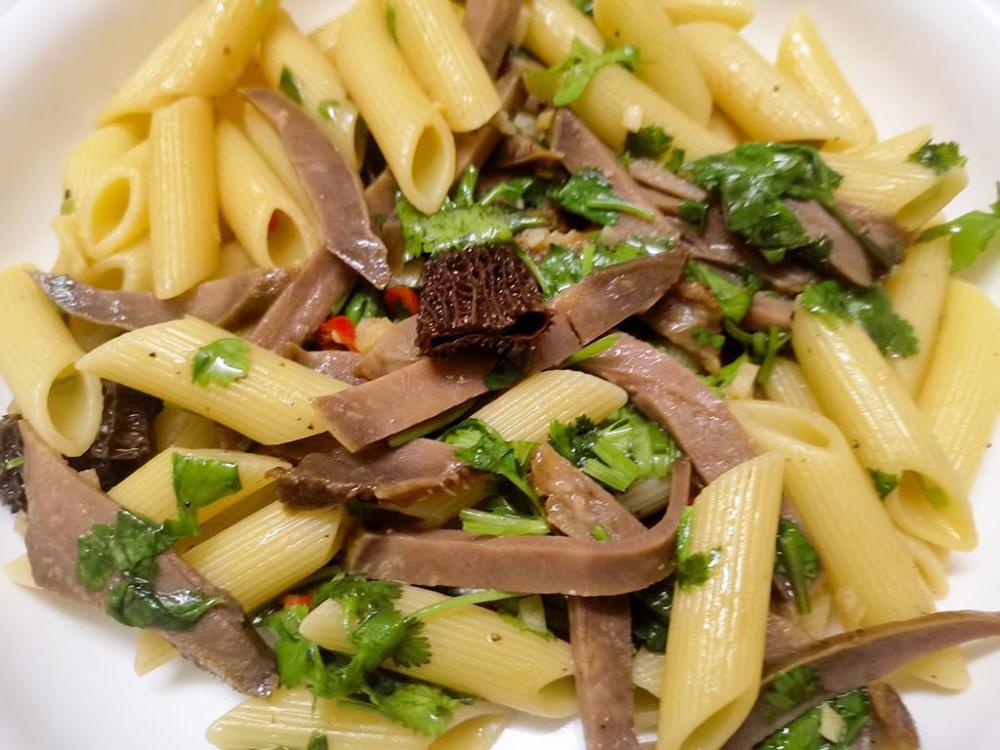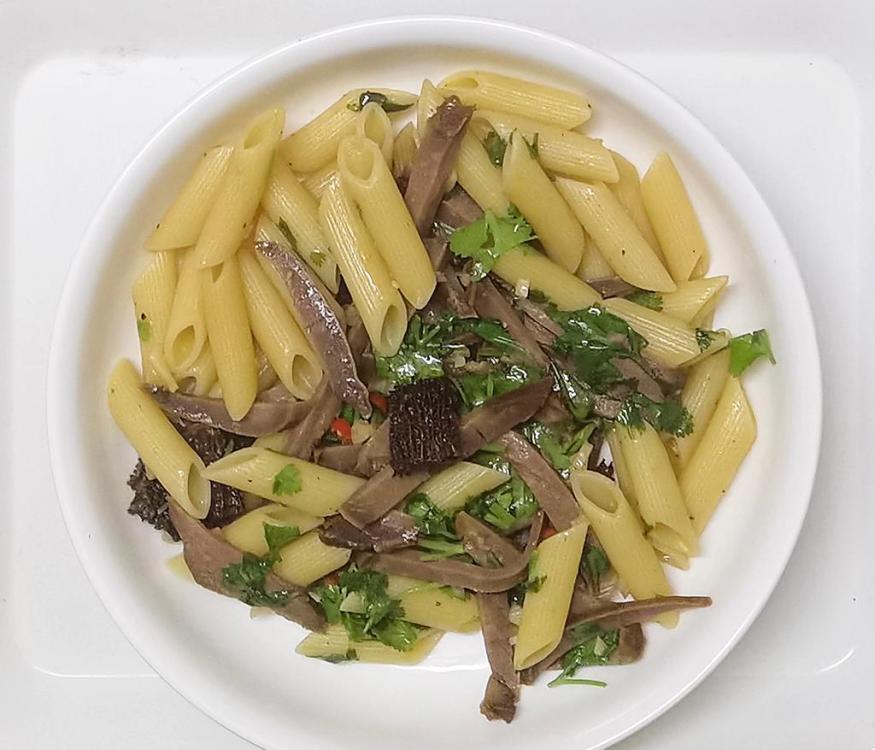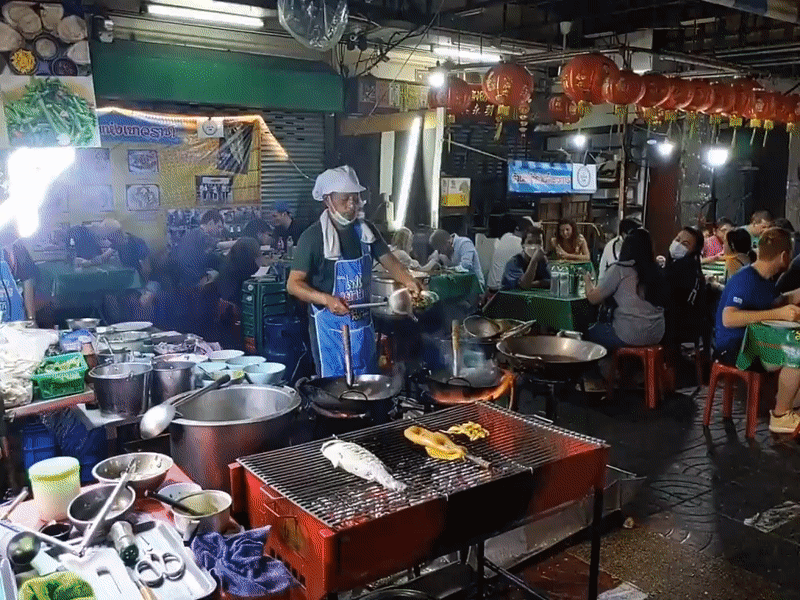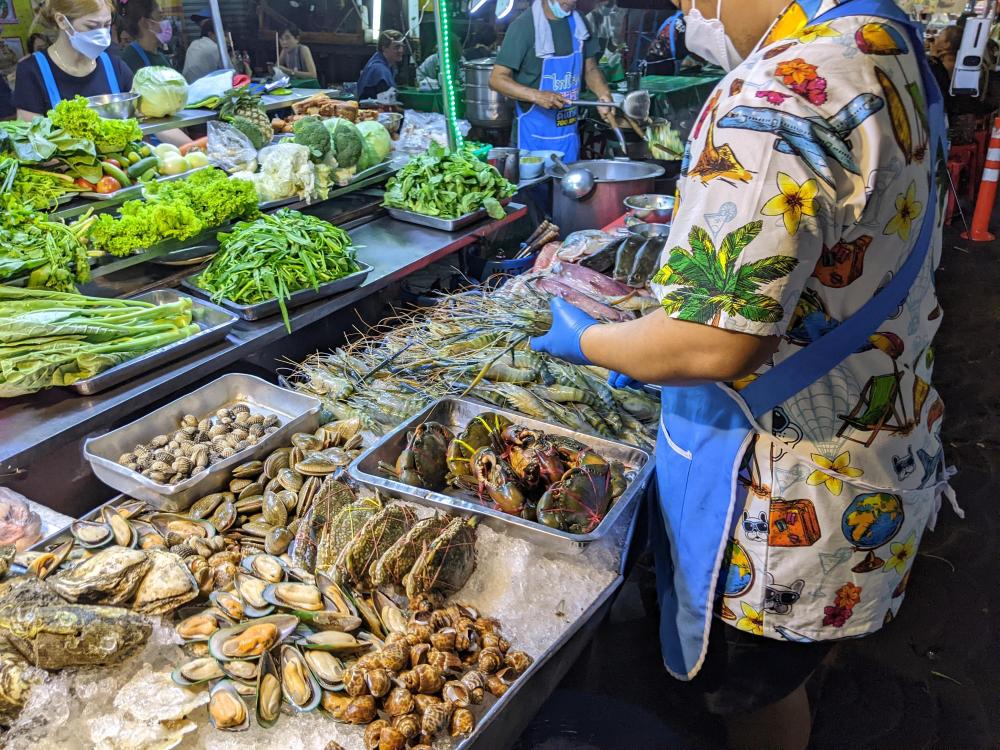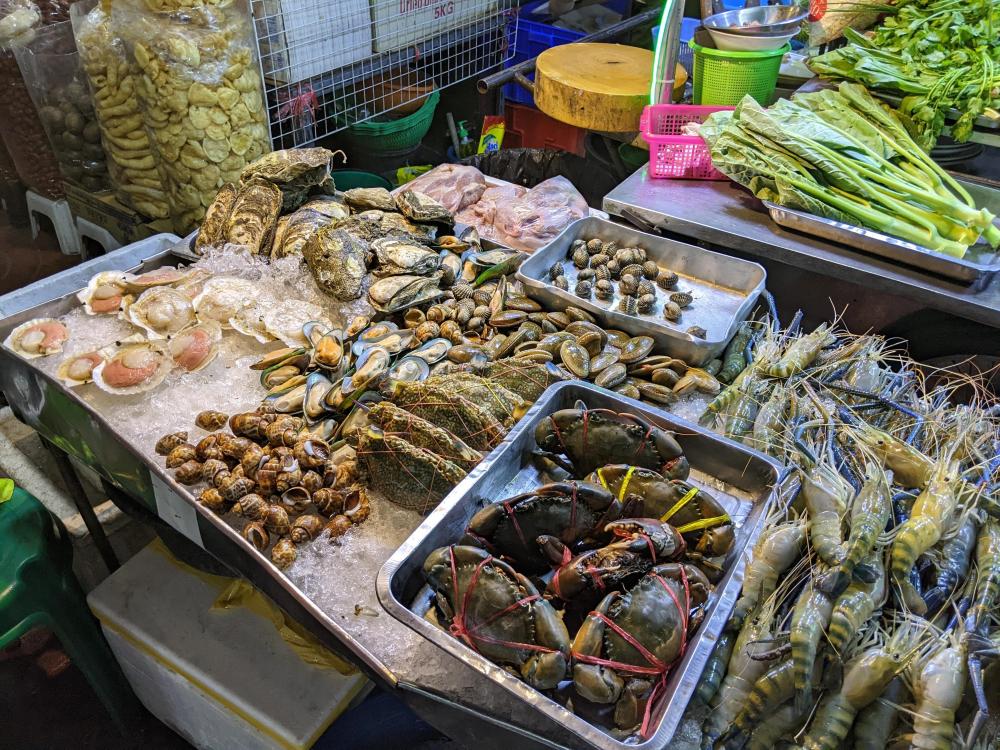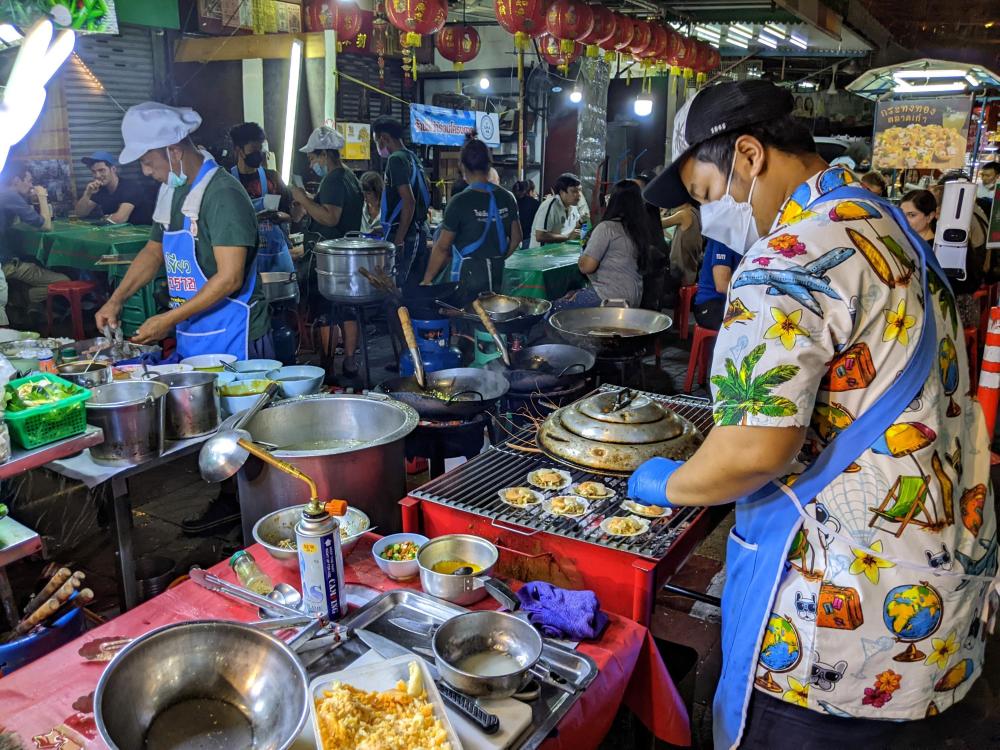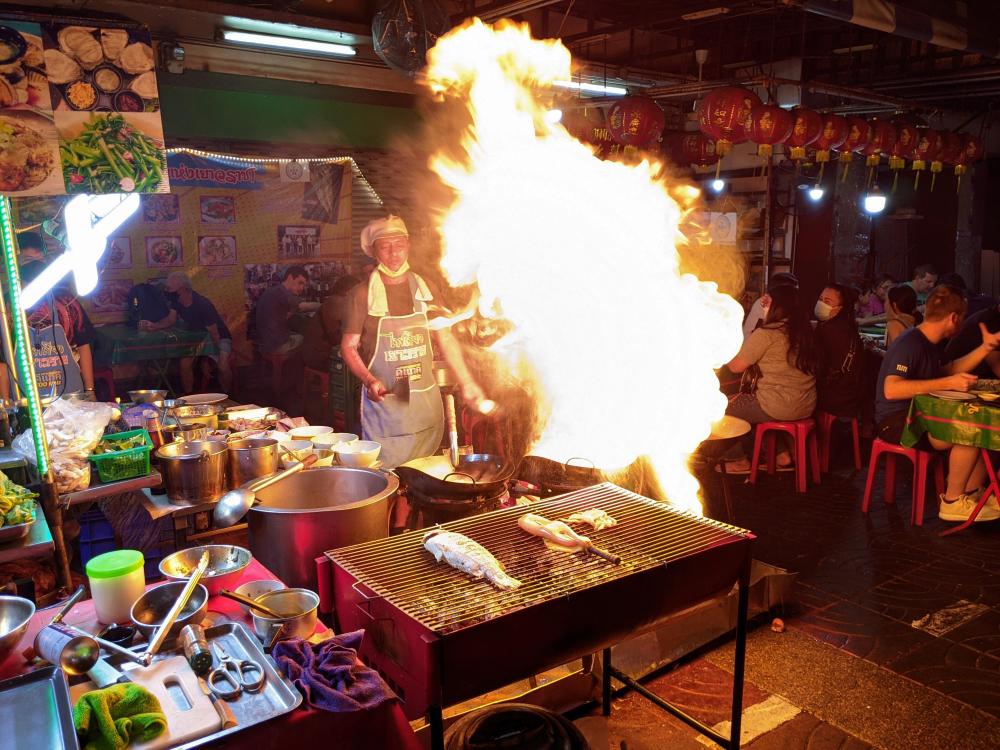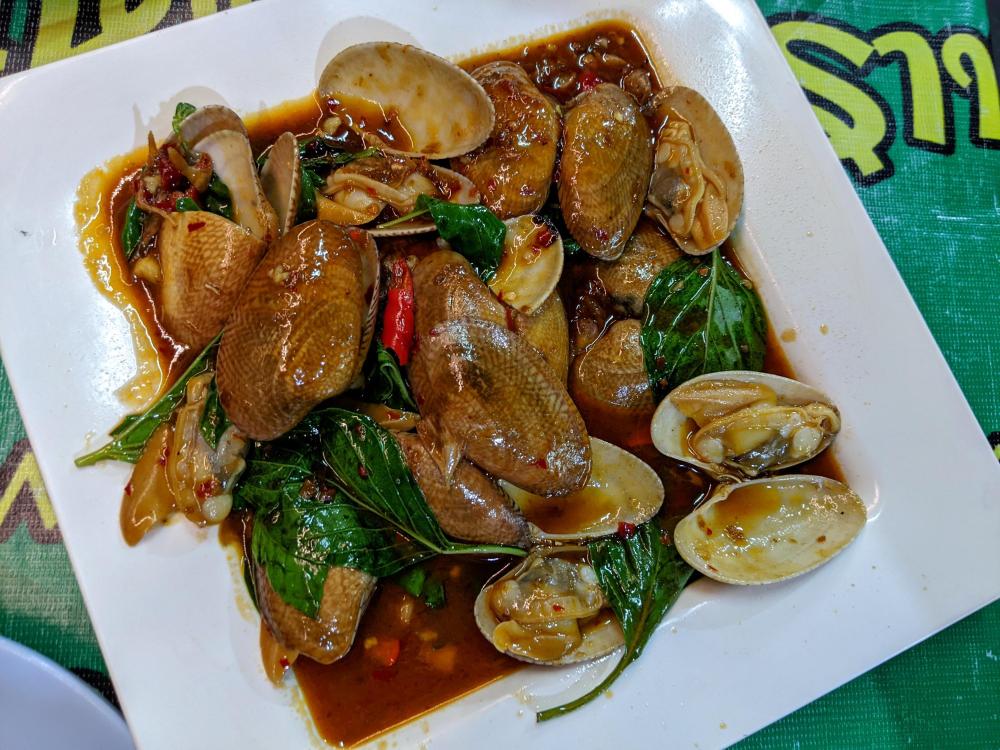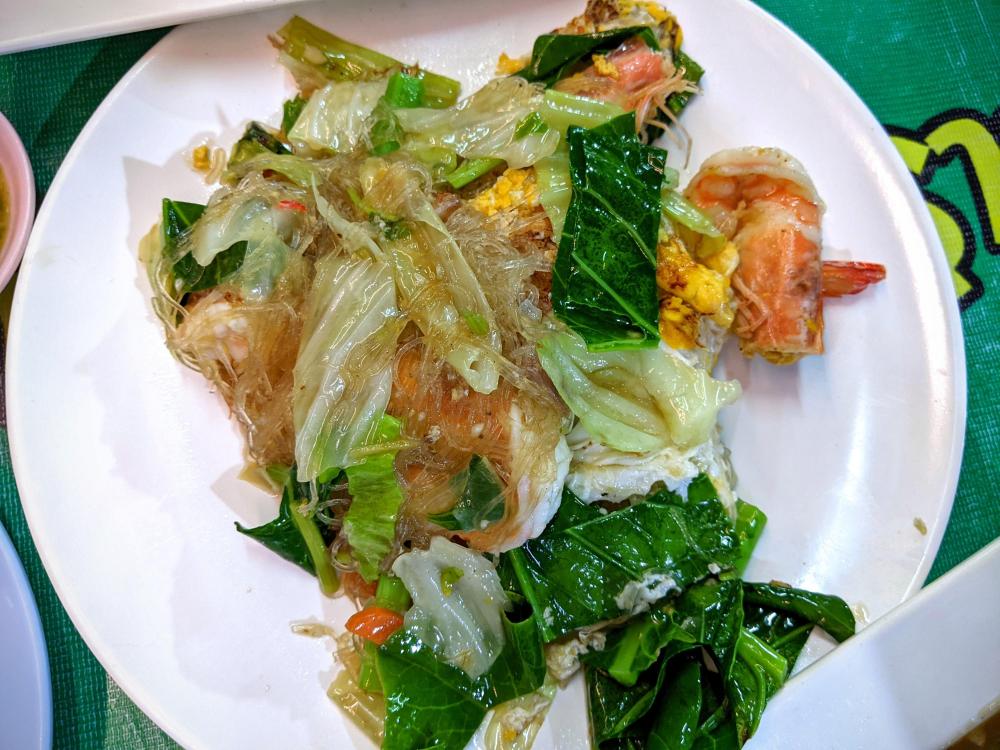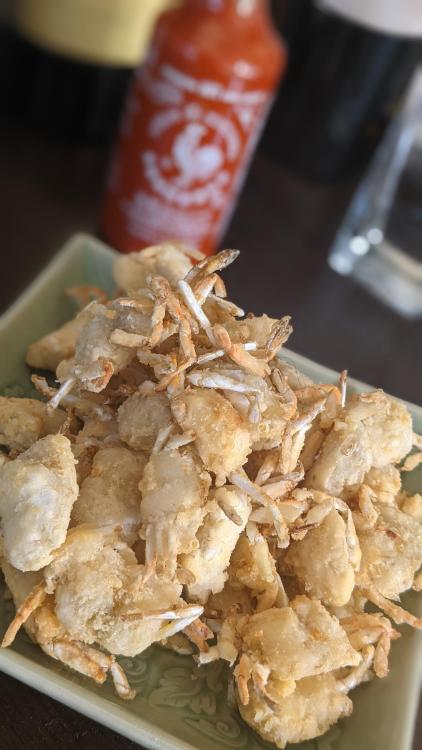Search the Community
Showing results for 'wok'.
-
Thanks everyone! I have a lot of stuff. A 12 cup food processor, a big wok, a bunch of all clad, a full set of t-fal prograde non stick pots and pans. A panini press, a big oxo salad spinner, a deep fryer, a hand mixer, a stick blender. 12 piece Villeroy and Boch every day china… and that doesn’t include all the wine glasses, the hand blown glass margarita and rocks glasses… you get the idea 😂 I basically designed the kitchen in my home to my wants and likes (same with two of the four bathrooms 🥺) so this move will call for donating as much as it does putting items in storage. I have a local storage unit and have easy access to it so that I don’t have to worry about what to do with everything. I did buy a new knife block set since my ex is taking the one we have, otherwise I just need to do some creative thinking as to what to bring and where to put it. Even the storage for my pup’s food is a bit bewildering. I do have a dishwasher and I did take measurements of the insides of some cabinets and am worried my dinner plates might not even fit in these cabinets. I’ll bring one over tomorrow to test out. I really do not want to buy new plates, etc. and I’d prefer not to rely on paper either but tbd. I have a covered deck it’s about 11 ft wide by 5 ft deep, so not small. Only electric grills are allowed on it. I don’t know a single person who owns or has used an electric grill. They are inexpensive enough, as per Amazon, but “electric” and “grill” seem at odds with each other. I have started reading the PAG thread. The whole “don’t look directly at it” aspect has me a bit thrown though! 🫣 I appreciate all the advice. When it comes to storage I’m going to make sure certain kitchen and clothing items are at the front of my unit so I can always go back for something should I miss it. Once the housing market slows down I would like to buy a townhome so I do want to keep everything I have (that hasn’t been overused and easily replaced) for the future 🤞🏻
-
Screw Kenji and Voltaggio. I could not decide between my Scanpan non-stick saute pan and my Berndes non-stick wok. I grabbed my trusty Williams Sonoma stir fry pan and stir fried sliced mushrooms. Transferred the mushrooms to a bowl. Added fresh oil and rosemary to the pan and browned the chicken all over. Keeping it moving with the wok shovel. Added vinegar then wine and garlic, and cooked down till the liquid evaporated. Removed the chicken from the pan, then added water to deglaze and make a sauce. Returned chicken and mushrooms to the pan for just a moment before serving. I have been making chicken cacciatore almost fifty years, or maybe more. One of my best ever. Accompanied by last night's baguette and Boursin.
-
Not counting any lids, several of which do double duty. Also not counting baking pieces, no sheet pans, no designated roasting pans, casseroles, bread pans or pie pans. No electrical appliances like rice cookers (yes I have one), slow cookers or instant pots (I have neither.) I don't have any pot and pan obsessions or addictions and I try hard not to acquire more stuff. I have replaced two dutch overs and the the two older ones do heavy lifting, one as a marmalade pot and the other for bread baking. The newer ones get regular use for soups and stews, etc. Another pan was a thrift store find in very good condition. It is Le Creuset and I think they call it a paella pan. It is big and doesn't see heavy use, but comes in very handy for several things, none of which is paella.. So I have a total of five enamel coated cast iron dutch ovens. 5 I have three cast iron fry pans. One is large and square and is in beautiful condition. It got a fair amount of use for bacon, but I hardly ever use it anymore. The next one is also in good shape and can fit two medium size grilled sandwiches. The third one is tiny and cute and gets used for toasting spices or little jobs. Two other saute pans include a 12 inch stainless steel and a 10 inch cheap non stick job that has been replaced once. Handy for eggs or delicate fish cakes, etc. Then I have one dedicated french omelet pan that is a relatively heavy carbon steel workhorse. I've had it forever and it's magic. 6 I have two copper pots. One is perfect for several portions of risotto, grits, rice pudding, stewed rhubarb, etc. It is at least 30 years old and gets frequent use. The other is a shallow slope sided pan that is perfect for making a tarte tatin. Limited use, but a great Good Will find a million years ago. 2 Two pots for miscellaneous use. An ancient trashy Rivere Ware that is big enough to steam five eggs on a steamer rack. And a nice sturdy little stainless steel one for making two portions of rice or bulgur or sauces. 2 Two other stainless steel pots include a high sided spaghetti pot, potato boiling pot, whatever and very sturdy. The other is a relatively lightweight stainless steel pot that is quite big and used for primarily for making stock. 2 So that makes a total of 17, to the best of my knowledge. It's beyond me why I spent the time to count my pans for this thread. I could have made lunch instead. Oh wait! I forgot the wok. At least 35 years old, carbon steel, used at least once a week, and I couldn't live without it.
-
Since the library is closed for our move, and I can't get a copy of The Economist to read at dinner, I've been making my way through The Wok. I haven't gotten that far yet but I see Kenji has a section on frying naked. I am so excited! Not sure if he counts a pinafore or not.
-
Beef and Broccoli from Kenji’s Wok book. Had a bit a Wagyu left over from Monday, so this version was a bit decadent…
-
Indeed, my Williams Sonoma cooking vessel was never marketed as a wok. Technically it is a stir fry pan. I love it though.
-
That's not what I call a wok. My woks are only ever washed by hand with simple water. You can never build up the all-important seasoning washing them any other way.
-
I have a cast iron wok that is unlikely to ever warp. However it was quite expensive. What I almost always reach for is the Williams Sonoma one, which is tri-ply steel/aluminum and which goes in the dishwasher.
-
Who would want a stainless steel wok? And for that price you could get 10 of my carbon steel woke plus a down payment on a captains bed to keep them in!
-
Since my Williams Sonoma is no longer made, for an induction wok you might consider Falk. https://www.copperpans.com/all-products#/specFilters=3!#-!18!-#!10m!#-!99 They should be quite responsive. I assume you have a bed?
-
Feeling a bit bored I decided to enumerate my battery of cookware. Only general purpose pots and pans designed for cooking over direct heat on the stovetop. I counted 60. This excludes all electronics and bakeware, as well as specialty pieces such as grills, griddles, fish poacher, aebleskiver pan, takoyaki pan (takoyaki are smaller than aebleskiver after all), and Rancho Gordo bean pot. Plus the humongous chicken steamer. For purposes of this post I did include my tagines and donabe which are more generic in function than, say, an aebleskiver pan. Though I dare say in a pinch one could prepare passable takoyaki in an aebleskiver pan. But why would one? The pieces I use most often seem to be a forty year old stainless stockpot (no copper or aluminum, just thin steel), a well battered Williams Sonoma Thai wok (for which I have a spare still in the box), and a variety of saucepans. What I find myself lacking is a small saute pan. Sad. Particularly since I prefer saucepans with high sides. How do other eGulleters relate to their pot and pan addictions?
-
It is not really a sauce. Boil noodles (whatever is there) in salted water. Drain. Fry some proteins, veggies (again, whatever is there) plus spring onions/garlic/ginger as aromatics, then return the drained noodles to the wok and add dark soy sauce (maybe 2-3 Tbsp), same amount of sweet cooking wine, some MSG and a little fish sauce. Give it a good stir, close the heat and give it a minute more to mingle. Stir again and serve. They are “dry” after that, so no puddle of liquid at the bottom of the pan. I like to add some Sichuan peppercorn oil and some chili crisp on my portion.
-
Sometimes I make steak balmoral, which consists basically of steak braised in whisly (or rather what remains of it after setting it on fire). It has a nice color, good flavor and a tender texture and, like most such preparations, you can keep it on the stove for a while if you are not ready to serve the meal (it's useful for when I'm not sure at what time the missus is going to be back from work, so I can have it ready to serve at a moments notice). For this recipe, you need a lean cut of meat (it can be pork or beef, and maybe chicken, although I'm not a fan of it), mushrooms, honey, whiskey, pepper, butter, stock and cream in undetermined quantities. You should mix the honey and the whiskey in advance. First, sautee the mushrooms with butter on a pan or a wok with crushed peppercorns. Once they are done, set aside and cook the meat. Sometimes, if I want the result to be less oily, instead of sauteeing the meat with cooking oil, I use the fat of the meat itself to coat the wok. It might be more carcinogenic, but it's less oily. Once the meat is cooked, toss in the mushrooms, pour the mixture of whiskey and honey and set it ablaze while stirring. This is the perfect time to take a picture for Instagram, but be careful not to drop the phone on the pan. After the flames die out, add the stock and cream, and stir until the texture looks good. Usually I season it with rosemary and tarragon, and maybe fresh parsley if I have it. So there you have an example of a recipe that includes whiskey and meat. Maybe it's not technically braising, since the meat is cooked before tossing whiskey on it, but it's tasty nontheless.
-
I've had this dish in several different places in Indonesia so far - several different parts of Bali and in Yogyakarta (on the island of Java). All of them have been pretty similar and I think this is pretty close to what I made most recently, although after some internet research, it seems that in other parts of Indonesia it would not be uncommon to add coconut milk. This soup is made in a similar way to Indonesian/Malaysian/Nyonya curries - you make a spice paste which is then fried in oil for a while to bring out the aromatics to which a liquid is added. The ratio of liquid to spice paste yields curry or soup. Also, like so many foods of the region, it's open to customization - some places add stuff to the soup that others won't... like hard boiled egg. One of the best versions of this soup I had was in Yogyakarta - my hotel had an Indonesian breakfast buffet and one area was a DIY soto ayam station. At the right is a cauldron of simmering soup, and everything on the left is up to you. The basics of what are added are chicken meat, shredded cabbage, mung bean noodles (aka cellophane noodles) and fried shallots. And of course, being Indonesia, there's always at least one sambal to add some heat. The base of this soup is chicken stock. My recipe below uses 4C of homemade chicken stock (unsalted). The stock gets simmered with aromatics, seasoned, and the chicken is then poached in the stock, removed, cooled and picked into shreds. Aromatics removed and the prefried spice paste (rempah) are added. It's not really practical to make a couple tablespoons of rempah, so the recipe below is for several meals for 2 people or so and the rest is frozen for later - I put it in a a ziplock bag, press into a flat sheet about 1cm thick - this way I can break off as much as I want while still frozen. Also, when I say this is for 2 people, there's one caveat - my wife is not a huge fan of soup - she loves this dish, but only has maybe 1/3 of the liquid that I'd have. So, with that being said... Rempah: About 1 inch galangal (fresh or frozen) About 1 inch ginger 5 cloves garlic 4 candlenuts About 1 heavy Tablespoon coriander seeds, dry fried until frangrant, then ground About 1 inch fresh turmeric (or about 1/2 - 3/4t ground dried turmeric) 6 shallots Blend the rempah ingredients in a blender, or ideally pound in a mortar. I typically blend 3/4 of the way, then finish it in the mortar. Fry the paste in a couple tablespoons of oil (I use rice bran oil) in a wok over medium heat to start, then turn it down to keep it from burning. Stir contantly. You know the paste is done when it looks quite dry and there is no liquid left and the oil separates back out at least partially - so it actually looks like it's frying. It should be quite fragrant. Soup: 4C chicken stock 1 stalk lemongrass, cut into 2-3 pieces and bruised 5-6 kaffir lime leaves 2-3 daun salam (Indonesian bay) leaves if dried, 5-6 if fresh 1 chicken breast Season with about 2t salt (start with less, and add until it tastes right) plus 1/2t MSG Simmer the chicken stock with the aromatics for about 5 minutes, then add the chicken breast, cover and simmer until cooked through. Remove the chicken breast to cool, and discard the aromatics Taste the remaining stock for seasoning - it should be pretty strong as the noodles will dilute it a bit. Add about 2T of the rempah to the soup and simmer for about 5 minutes. While that's going, shred the chicken breast and prep the bowls with soaked/drained cellophane noodles, cabbage, chicken, fried shallot and cilantro/green onion. Add the boiling soup to the bowls. Garnish with sambal and a slice of lime.
-
Charlie made kimchi stew yesterday which is what he does when Kimchi starts to get too soft. He said we were going to need some more red pepper paste, so I went to the Korean market and got some and some fresh kimchi and a few other things for dinner. We had spicy pork bulgogi and some radish kimchi. I didn't know we were out of laver or I would have had some with dinner. I cooked it in the wok which is the easy way. It tastes better on the grill but it is wet and cold so I wimped out.
-
@liuzhouIs there a reason why you went with cast iron woks as opposed to carbon steel?
-
Haha! Of course 36 cm. Have edited. That said, I have seen 36 inch and much larger woks. But not at home!
-
I mentioned elsewhere on eG that my faithful assistant in the kitchen, my wok had passed away. I bought a new one, of course. A 36cm uncoated, round-bottomed, handmade, cast iron chap, but recent personal attention has had to be paid to certain bureaucratic affairs with the Chinese government regarding my business have kept me busy recently. That has now been resolved and it's time to move on to dealing with new wok. It needs deep cleaning to remove the machine oil it is coated in both inside and out then carefully seasoned before being put into service. But it's more complex. A 36cm wok is too large for my everyday needs. I live alone. Also, I can't use a round-bottomed wok on a stand alone induction cooker which I sometimes require, so I also bought a 34cm flat bottomed fellow for those needs. It too is cast iron and non-coated. It too needs the same attention. So the next couple of days, I'm going to be having fun dealing with that.
-
Sorry for not responding earlier. So far, I've just been reading and haven't cooked anything from the book yet so I've been reluctant to comment. That said, I think it's a very good book, with a lot of useful information. As someone who already owns a good selection of Asian cookbooks, I probably don't need to own it but it's so big, I'd never get through it on a library loan and I can see referring back to it from time to time, as I do with his other book, so I don't regret the purchase. As usual, Kenji has quite a lot to say about pretty much everything from buying a wok and pantry ingredients to knife skills, to the actual recipes and cooking so it's quite a comprehensive book. I happen to enjoy his writing so I've been enjoying reading. As with his Food Lab, a lot of the information I found useful is in the background materials rather than part of individual recipes so I think a person who wants to open the book to a recipe and start cooking is kind of missing the boat on this sort of book. The photos are utilitarian and tend to be small and simple. I think they serve the purpose of the book, the process photos are clear enough to see what's going on but the finished dishes aren't displayed in the highly styled glamour spreads that appear in many recent cookbooks. I'm happy to see the actual dish, cooked per the recipe rather than one where a food stylist decided to arrange a dish with ingredients that are not cut, mixed or cooked according to the recipe ....or even stuff that doesn't even appear in the recipe... for the sake of a photo.
-
Dinner tonight was a disaster. As soon as I started to cook, it became very clear that my constant companion over the last ten years of cooking was gone forever. Dead. Tragically. As soon as I poured my oil into the hot wok, I got this massive flare up underneath the wok. It took me what seemed a long time to work out what was going on. When the oil hit the hot wok, it went through a crack in the pan and onto the burner. Somehow the pan had developed this four inch long crack in the base. It was too late to go out and give it the funeral it deserved or to go buy a new one. So I was forced to replan and make an emergency dinner. I had some braised pig's tongue in the fridge, some dried morels and the usual aromatics. Cooked me up some penne rigate and added the aforementioned along with chilli and coriander/cilantro. Guess what's my shopping plan in the morning.
-
The chef put up a show when he saw me taking pictures. Clams in garlic and chili. Spicy and lightly sweet, with yellow bean sauce. Pad woon sen. A bit oily, but you can taste the hot wok. Seafood pad cha. Seafood in a herbal sauce - got chili. garlic, basil, fingerroot, green peppercorn. With rice and cheap bad beer. That was one heck of a street food meal.
- 206 replies
-
- 13
-

-

-

-
Seerious Eats this week has a digital Wok issue. Touts Kennji' s new book...BUT the essays/profiles of Grace Young (noted cookbook author) and Tane Chan (owner of the famous Wok Shop in San Francisco) are worth a read https://www.seriouseats.com/the-wok-digital-issue-5218092
-
My first time deep frying in my wok on induction. Worked great - so easy to control the temp and no fears of fire! Brings back memories of a snack in the old Bangkok airport. Too bad I couldn't get the real Sriracha - the last time I went to my Thai store, they were out
-
Ma La Xiang Guo (Hot and Numbing Fragrant Pot, or Dry Hot Pot)
KennethT replied to a topic in China: Cooking & Baking
Does anyone know the reason why, in the examples above, hot oil is poured onto the dried spices rather than the spices being fried in the oil? I don't know if my question is clear. For some dishes using a lot of spices, the oil is heated in a pan/wok, aromatics (garlic/ginger/etc) stir fried and then the spices added and are stir fried until fragrant. But the examples above heat the oil and pour onto a pile of spices and let sit. Is there a reason for the 2 techniques or are they more of a matter of convenience? -
Hi Everyone, I've made my career as a scientist and researcher, but have dabbled in cooking as an amateur--even did a few taste studies when I was a faculty member at Cornell University school of hotel management. but Seven years ago, I decided to build up from scratch a small home cooking kitchen that would rely on induction and convection--and be ergonomic friendly. My induction units are from Vollrath, and I have two inexpensive Oster ovens--a toaster and a roaster. I have two separate sets of pans--one set are enameled cast iron, the other are stainless. I have selected them to carry out cooking at lower temperatures--around 250 degrees. I steam in several ways--mostly with an insert--and I often use my Staub crepe pan for a lots more than pancakes. If I can, I always try to consider new products and technologies. In eci, I have a Staub perfect pan as a home cook substitute for a wok, and Hestan nanobond for my 11" fry pan. If I could afford it, my next step for induction would be the control freak. In cutlery, I'm interested in fusion between Eastern and Western kitchen knives--especially involving newer processes. My most recent interest for cultural fusion is the Japanese deba (I've just reviewed the Kai Seki Magoroku Kinju on Chowhound), and my most interest for new processes are dual core knives. More than anything, my number one goal is to have fun! Ray



